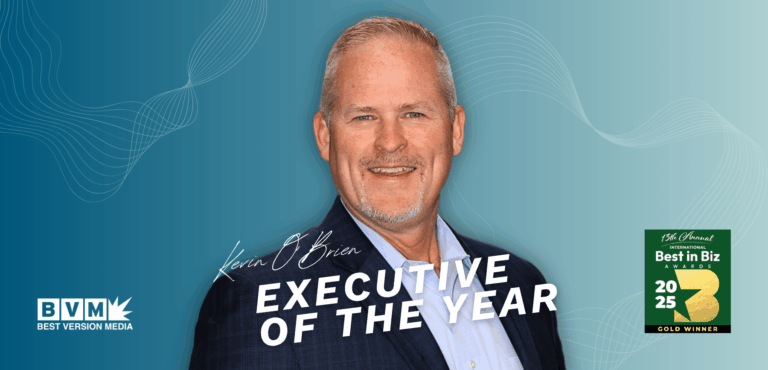How to Use Customer Testimonials on Your Website the Right Way
A satisfied customer is among the most valuable assets a local business can have. They can foster long-term relationships that lead to word-of-mouth referrals and repeat visitors, ultimately boosting revenue.
However, an often overlooked benefit of a happy customer is their potential to provide a testimonial. A testimonial is typically a positive review of your business in which a customer shares their experience with your product or service. It offers social proof that real people have interacted with your business and found value in it.
Many local businesses underestimate the power of testimonials, despite their significant impact on sales. Medill Spiegel Research Center reports that a product with five reviews is 270% more likely to be purchased than a product with no reviews.
While you may not have the resources that large corporations do, such as nationally televised commercials featuring celebrity endorsements, you can still gain a major advantage through simpler, more cost-effective methods.
This guide will walk you through everything you need to know about testimonials, from the different types, to how to gather them, to effective strategies for showcasing them on your website, along with some bonus tips. So without further ado, let’s dive into the various types of testimonials your business can collect and use to build trust and drive growth.
Types of Testimonials
1. Quotes
The most common type of testimonial, quotes are acquired directly through submission forms such as surveys and are simply the expressed opinions of real customers about your product, service, or business. They have been used across all forms of advertising for decades, including magazines, social media, and various other media channels.
2. Interviews
As the nature of interviews allows, this format allows you to prepare questions with a specific purpose in mind. It’s an excellent way to collect detailed feedback that can generate insights into your offerings and ensure the responses are coming from verified customers.
3. Social Media
Sprinklr found that 246 million Americans are active social media users, making it a prime channel for collecting testimonials. Platforms like Facebook and Instagram are especially effective due to their interactive features, such as comments and shares, that allow for easy and widespread engagement.
4. Blog Posts
For more in-depth reviews, blog posts offer an opportunity to explore your business’s offerings in detail, educating potential, current, or returning customers. While commonly used by large corporations, blog testimonials are a great way for local businesses to gain a competitive edge. Customers, local influencers, or anyone familiar with your business may write them.
5. Videos
Video testimonials are increasingly popular, as many internet users prefer visual and auditory content. Seeing real people speak about their experiences with your business adds a layer of credibility and trust. Typically, video testimonials should be kept under two minutes in length. If a lot of information is packed into a review, breaking it up into a series can help maintain viewer interest.
6. User-Generated Content
User-generated content is a broad term used to describe unsolicited feedback that’s provided without influence from the business. Blog posts and customer reviews fit into this category as well as content from third-party review sites such as Yelp.
7. Case Studies
Case studies generally only apply to more complex products and services that require added attention to demonstrate the value to potential customers. These in-depth studies are often used near the end of the marketing funnel to give potential customers the final push to make a purchase.
8. Press Reviews
While a press release is used to announce a new product, achievement, or update, press reviews discuss the quality of a new product or service. This can include things like new menu items at a restaurant or a recently added feature on a vehicle at a dealership.
9. Success Stories
Success stories are similar to case studies, except they focus on how the product or service helped the customer rather than how to use it. These are typically marketed towards new customers who are first interacting with a business, while case studies tend to appeal to those who have already shown interest.
How to Gather Testimonials
Now that we’ve covered the types of testimonials, it’s time to figure out how to collect them. While it may seem like a challenging or uncomfortable endeavor, many people are often excited and willing to give a testimonial under the right circumstances.
The ideal testimonial comes from a satisfied customer who voluntarily praises your business without being prompted. These can often be found on platforms such as Google, Yelp, or your Facebook business page.
However, many customers need a little push to share their feedback, and there are several effective ways to encourage this. One of the easiest methods is to integrate testimonial requests into the buying process, prompting customers automatically after each transaction.
Email outreach is another productive method to gather testimonials. You could reach out to all previous customers requesting their feedback, and could even add incentives for responses, such as a discount code.
If you prefer a more selective approach, targeting previously satisfied customers would be an ideal target. These could be individuals whom you’ve talked with face to face, through a phone call, or a virtual meeting, as they are more likely to have an interest in publicizing their praise upon request.
While it may not be suitable for every business, partnering with a local influencer or public figure for an endorsement can significantly boost credibility. In this case, transparency is expected, and any compensation should be disclosed within the testimonial.
No matter how you choose to collect testimonials, authenticity is key. Prioritize reviews that include specific pain points such as product durability, customer support, and other aspects that your customers value. This demonstrates your commitment to solving customer problems and continually improving their experience.
Placing Testimonials
Gathering testimonials is important, but how you display them on your website can mean the difference between driving business and wasting time and money. Various options exist, and all can provide value in one way or another. Here are six effective placement options for your testimonials.
1. Dedicated Page
One of the most common strategies is to create a dedicated testimonial page. It can be used as a landing page that you include in social media posts, email marketing content, and other promotional materials to help drive traffic. While it may not receive much organic traffic from search engines, it remains a useful and credible resource.
2. Home Page
First impressions are vital, and your website’s homepage is often among the first interactions with your business for potential customers. Presenting a positive review near the top of the page can immediately establish trust and influence visitors who have already heard about your business and are interested in learning more.
3. About Page
Those who are unfamiliar with your business will often visit your about page to learn more about the history of your company and the people behind it. If you are in the service industry, such as plumbing or painting, this is especially likely. Meeting the visitor head-on with a positive experience from a past customer can add a personal touch to your story and assure they’ve found a company that is reliable and professional.
4. Sidebar
If you use sidebar advertisements on your website, consider creating an ad for your business that includes a testimonial. This is valuable space as it often appears across every page on your site, meaning visitors can be influenced by the testimonial even if they weren’t searching for it.
5. Footer
The footer of your website is another opportunity for passive exposure. It may not be as frequently viewed as sidebars, but it’s still a spot that garners attention from those who’ve shown enough interest to scroll through your home page or a landing page.
6. Product/Service Page
A visitor who reaches a specific product or service’s page is likely just one click away from making a purchase. Still, some may need one final nudge to make their decision, and a glowing testimonial could provide exactly that. Just be careful not to distract from the product or service information, as it could clutter the page and negatively affect the user experience.
When choosing the best placement options for you, keep in mind your website design, industry standards, and your marketing goals. It’s best practice to experiment with multiple placements to determine what resonates most with your audience.
Bonus Tips
To take your customer testimonials to the next level, consider these tips for writing and displaying them:
- Choose a legible font style and size to ensure all audiences can easily read and understand the content.
- Show only the most relevant content and receive permission from the original author if any edits are made to their testimonial.
- Clean up the text where necessary, but be sure to preserve the original meaning.
- Include the reviewer’s information where appropriate, such as full name, photo, and job title, to enhance authenticity and trust.
- Use negative space strategically to improve readability and help the testimonials stand out on the page.
- Prioritize testimonials that quantify results, as they tend to be more persuasive.
- Keep it simple and avoid forcing the user to click or hover to view a testimonial.
Improve Your Online Presence With Best Version Media
If you’ve done the work to collect and place testimonials on your website, you’ll want to attract as many eyes as possible to them. That’s where Best Version Media can help. With listings, reviews, and reputation management, you can increase your business’s online presence across multiple search engines, maps, and directories, all from one simple dashboard.
BVM also offers the ability to bundle display ads and social media campaigns to make the most of your marketing budget and ultimately drive sales.
Contact BVM today to get your new marketing strategy started.





